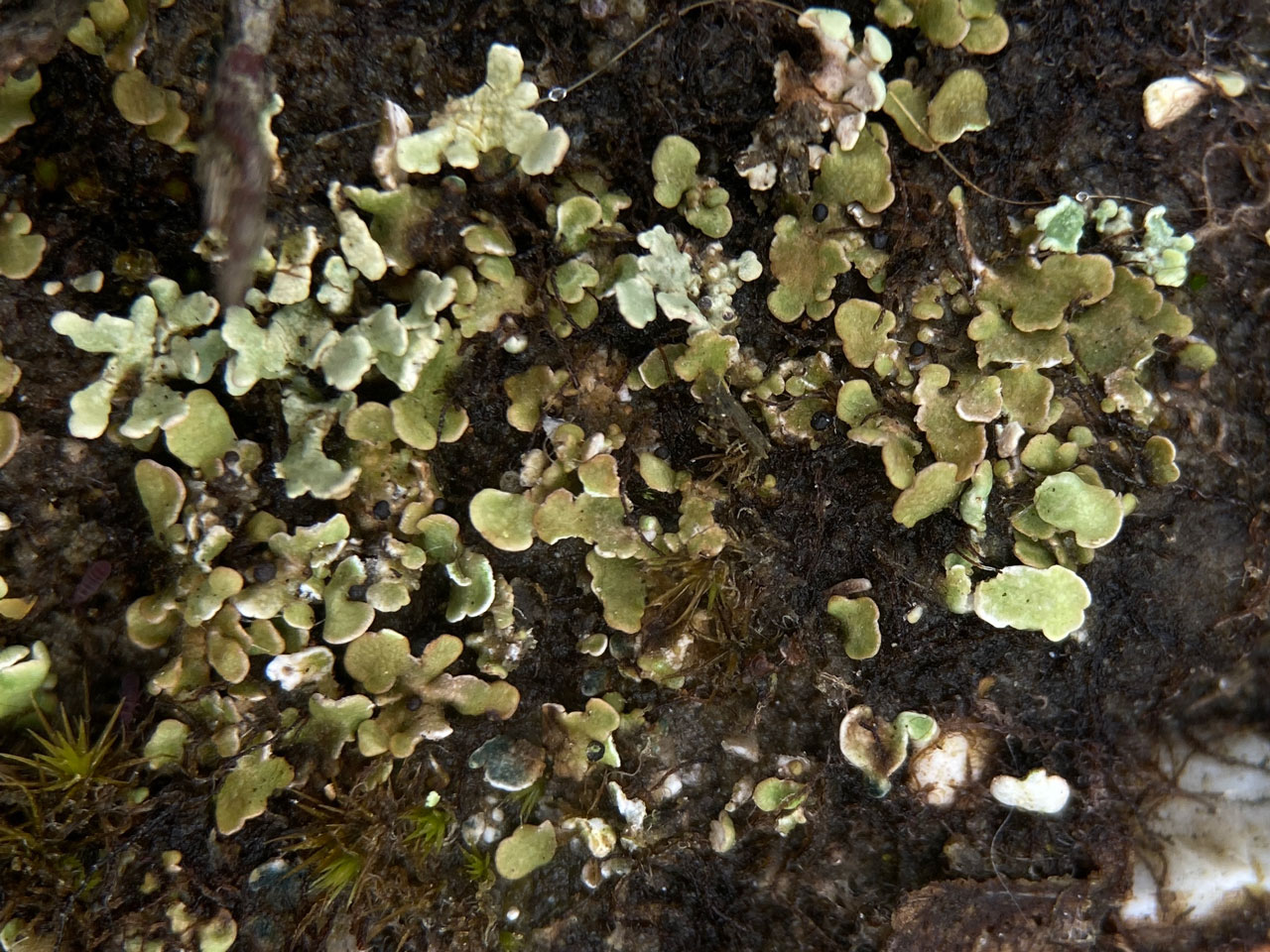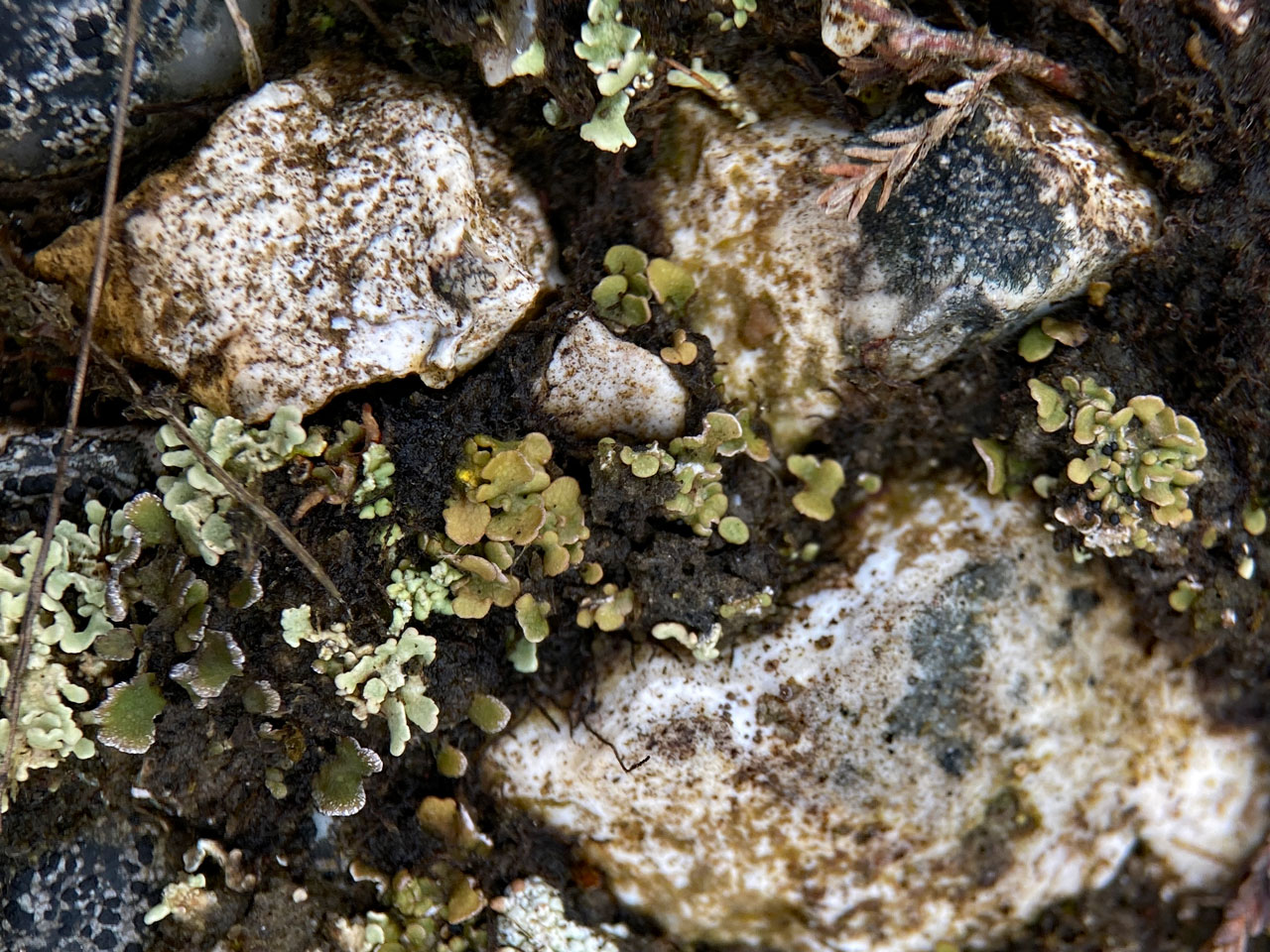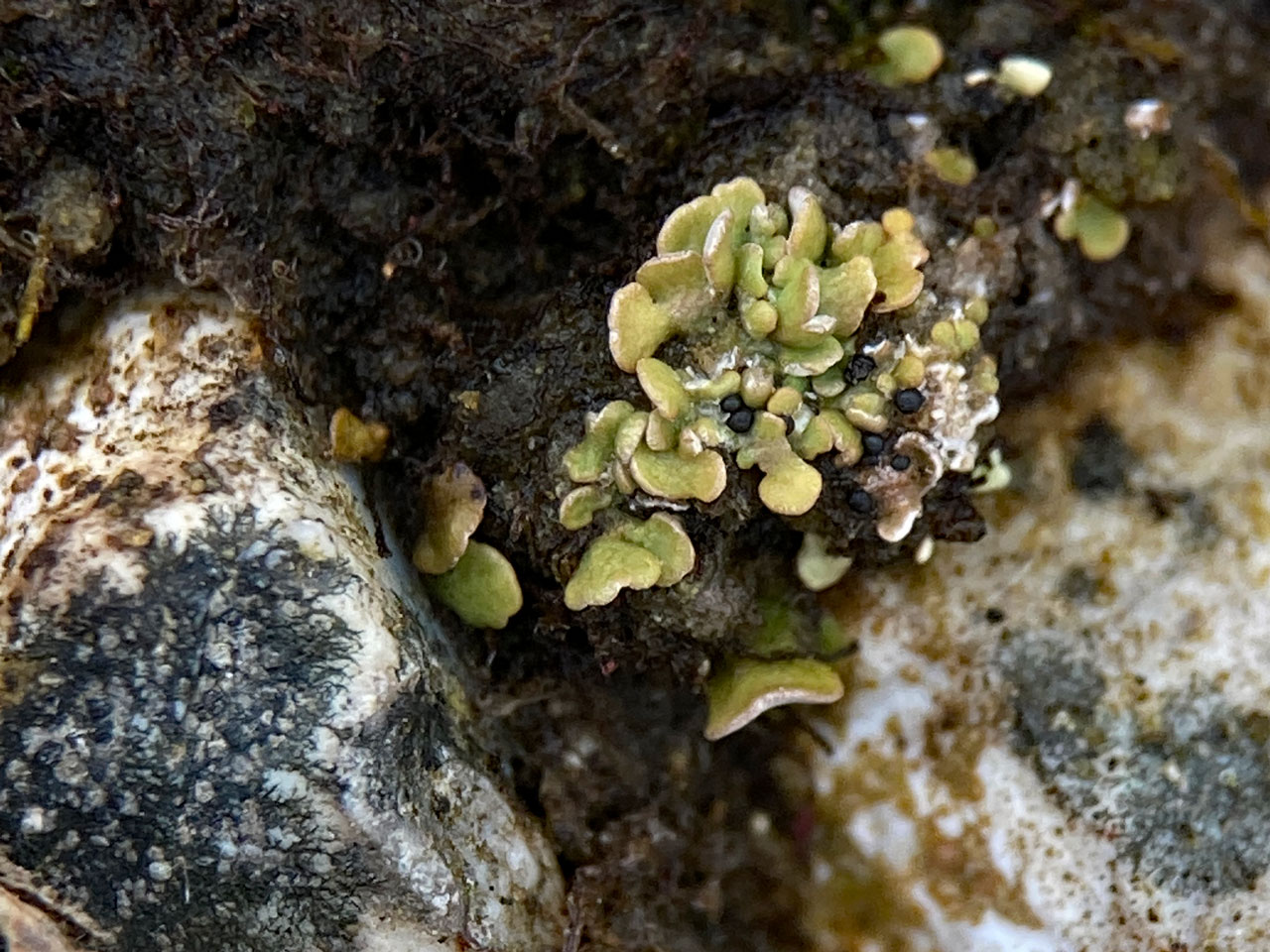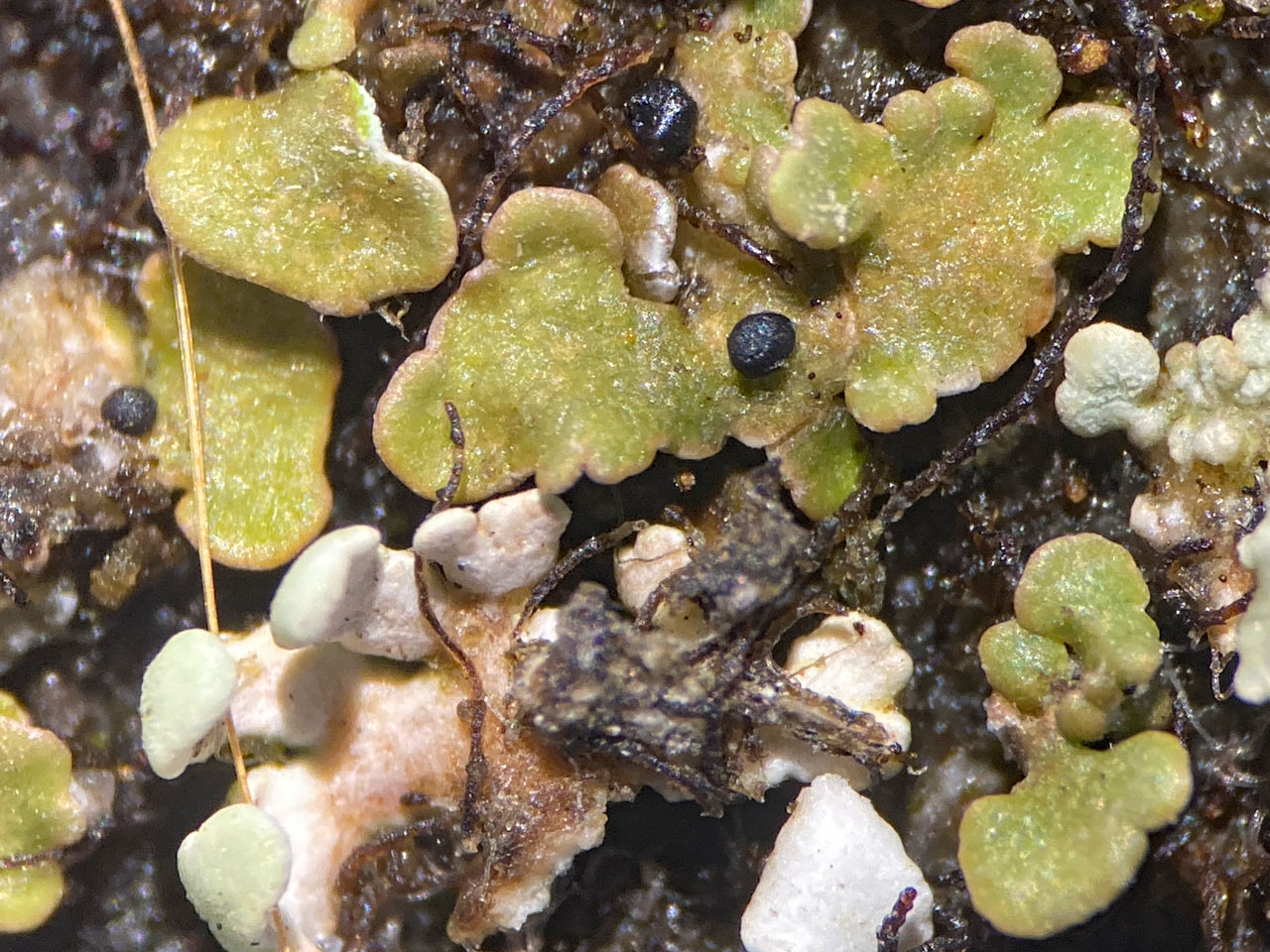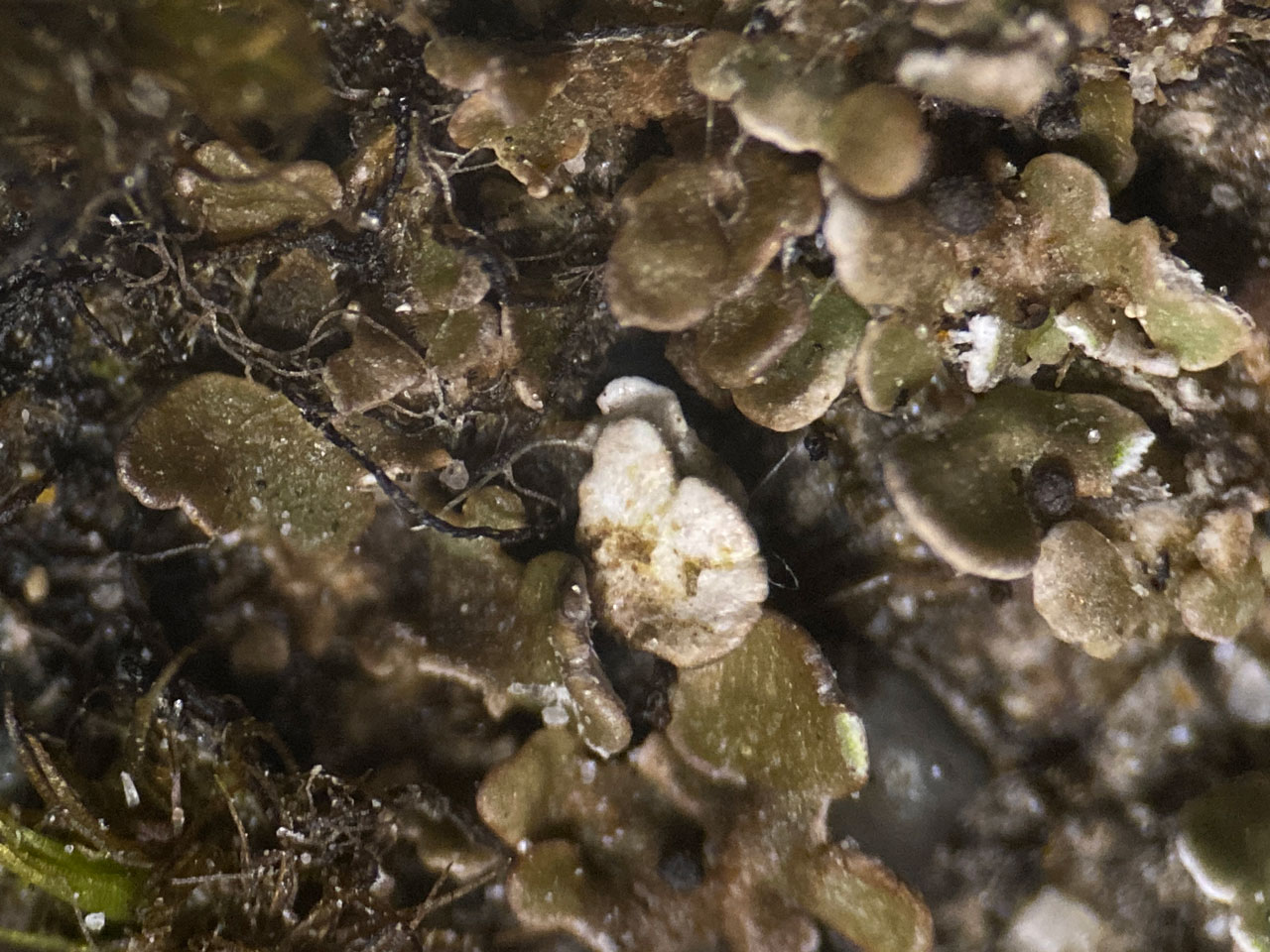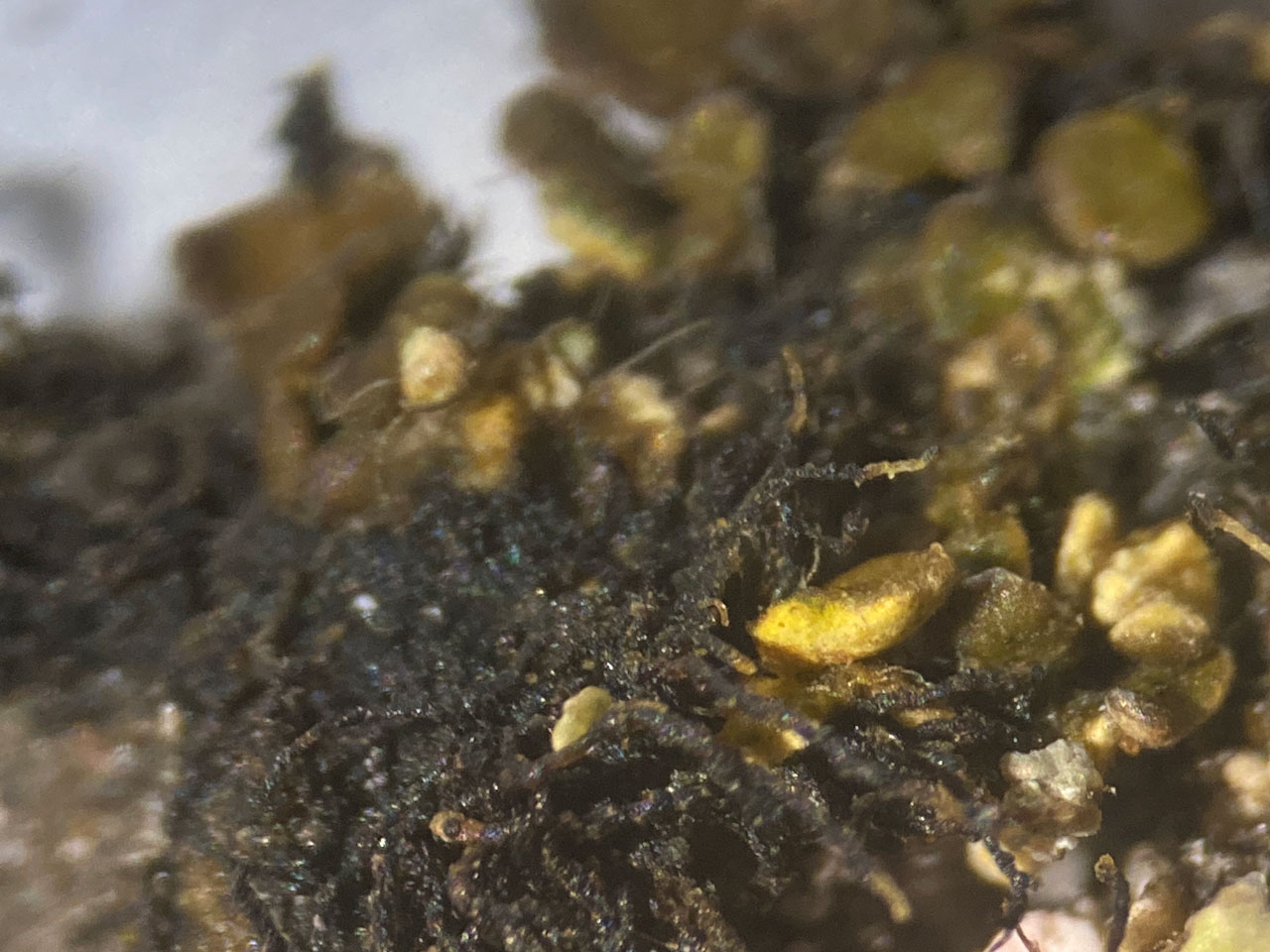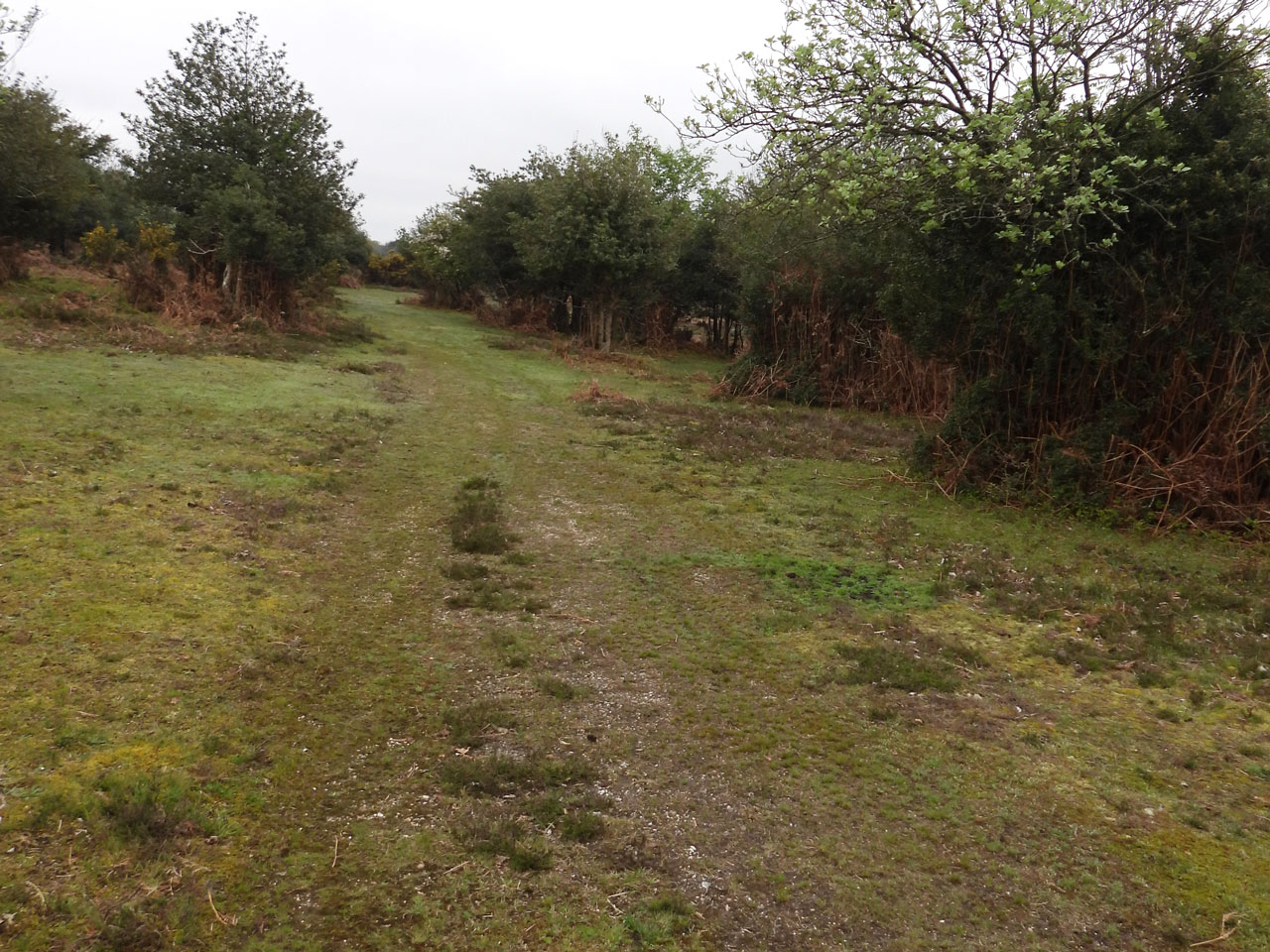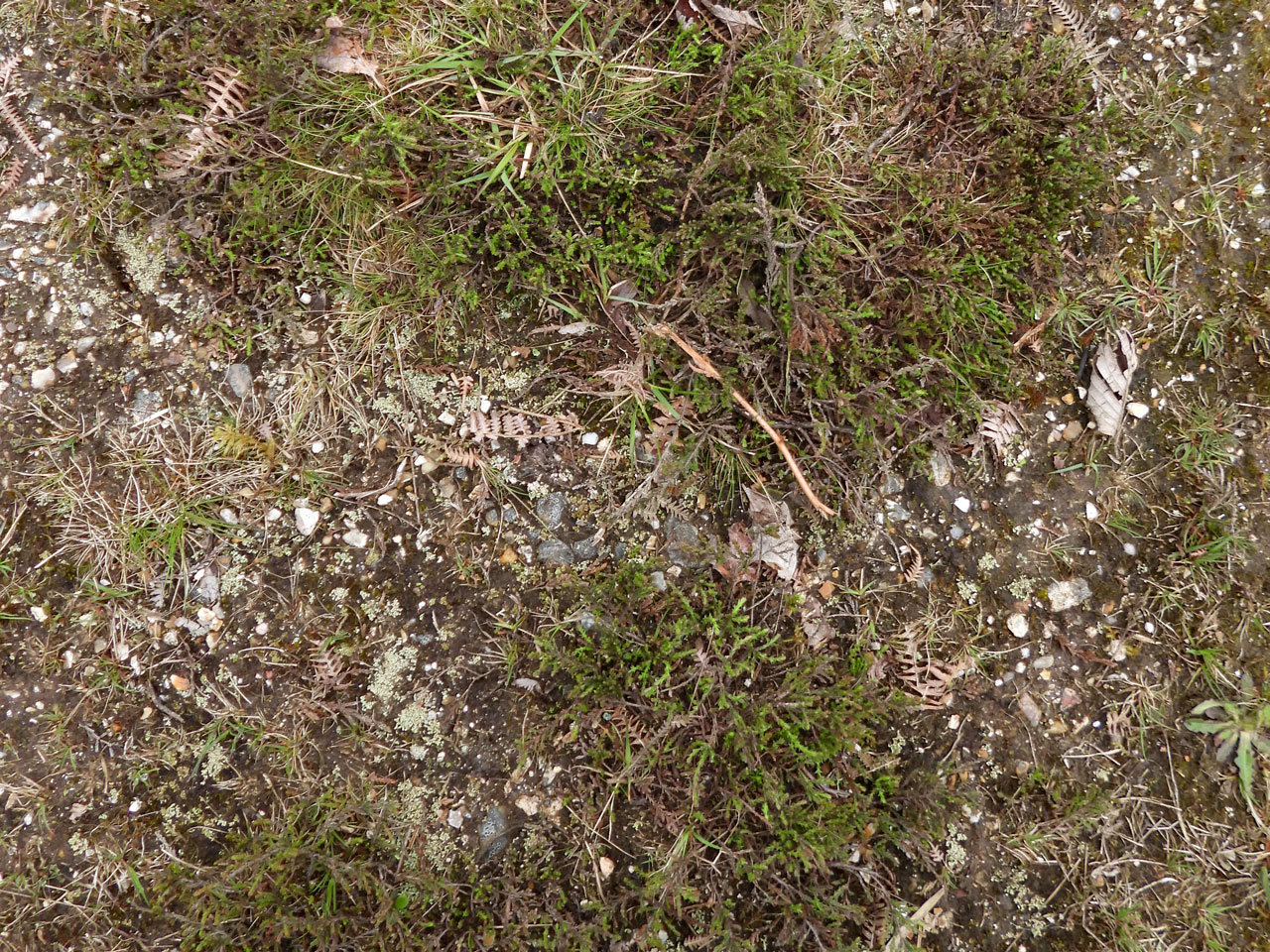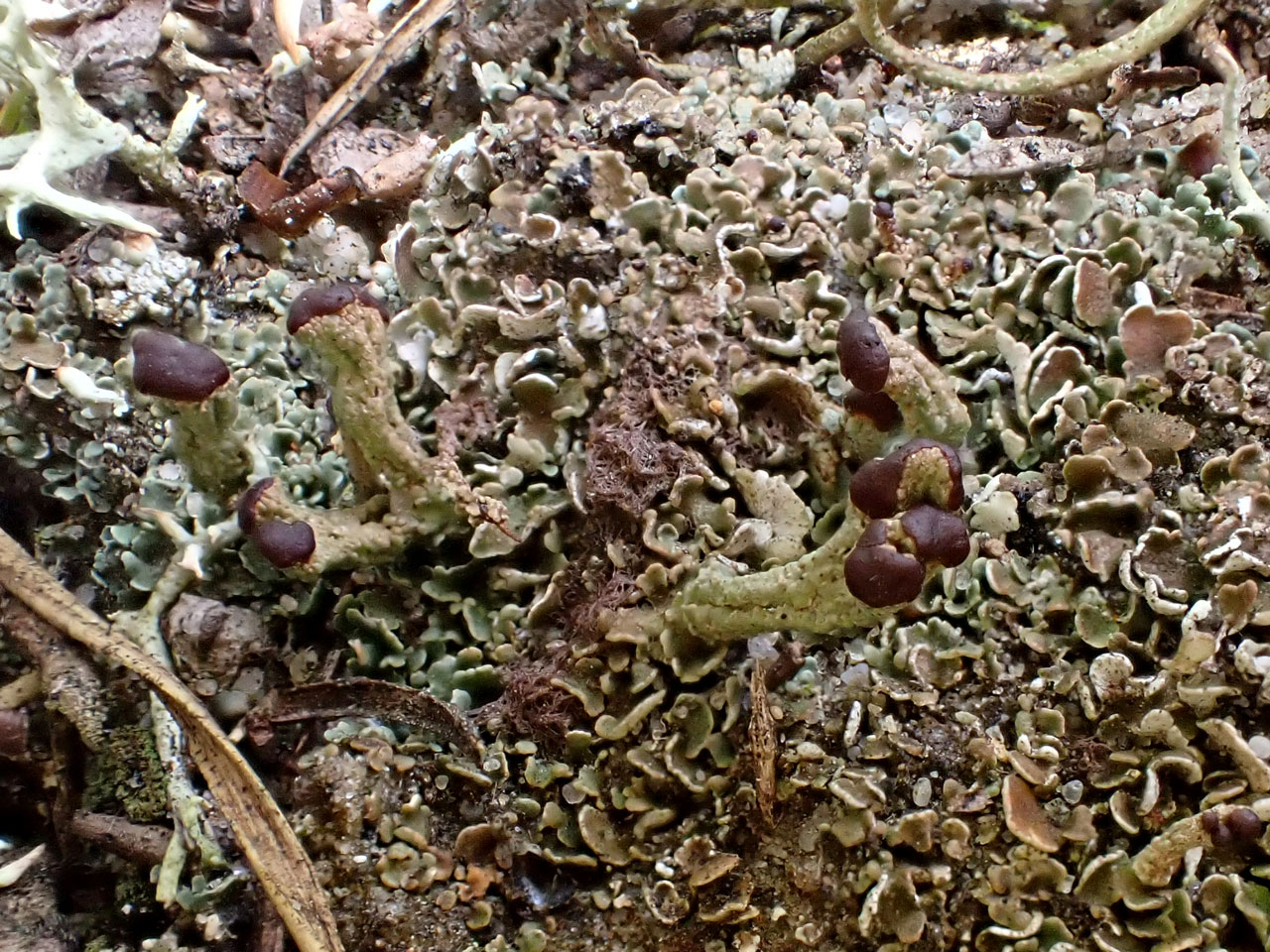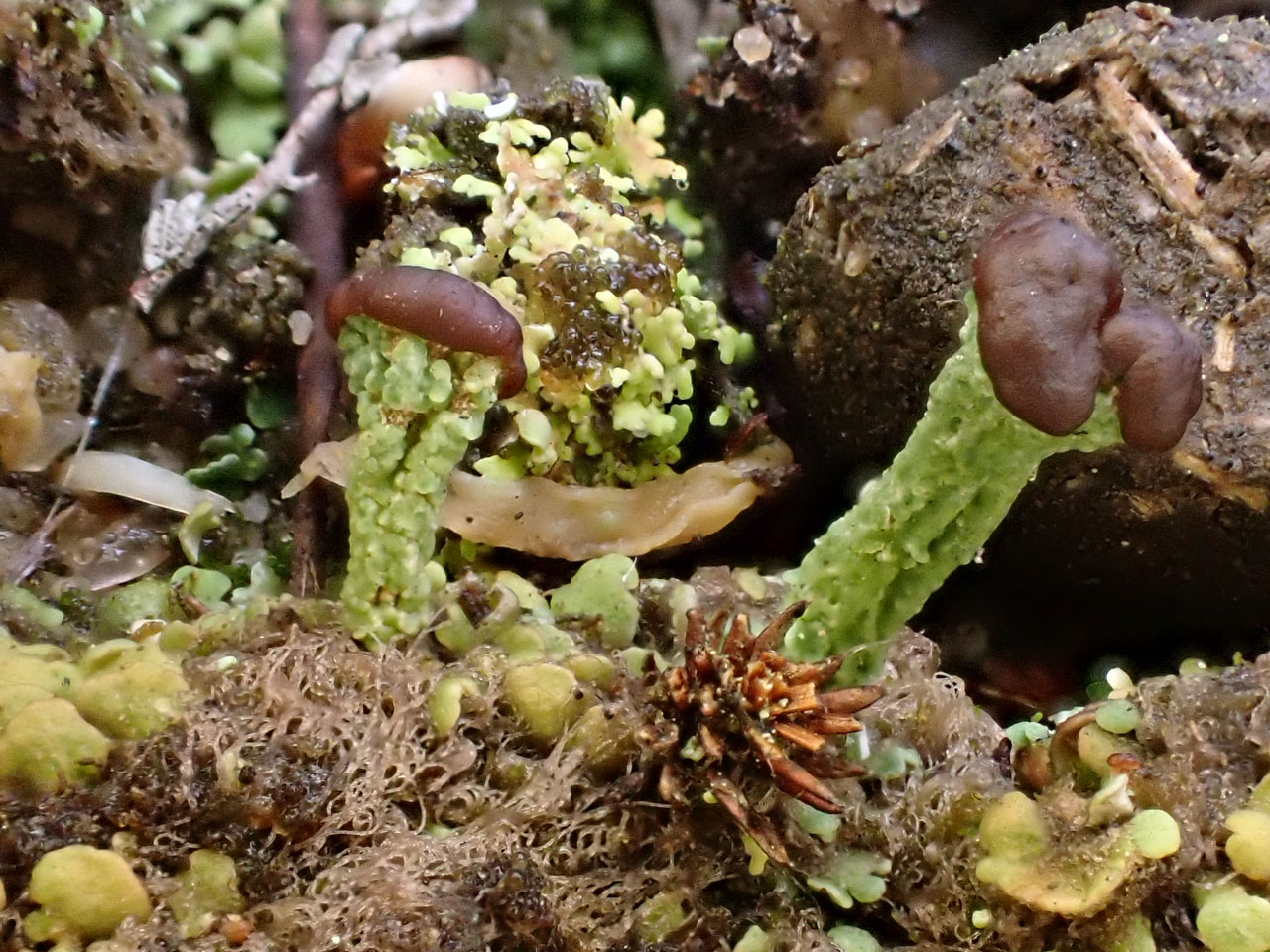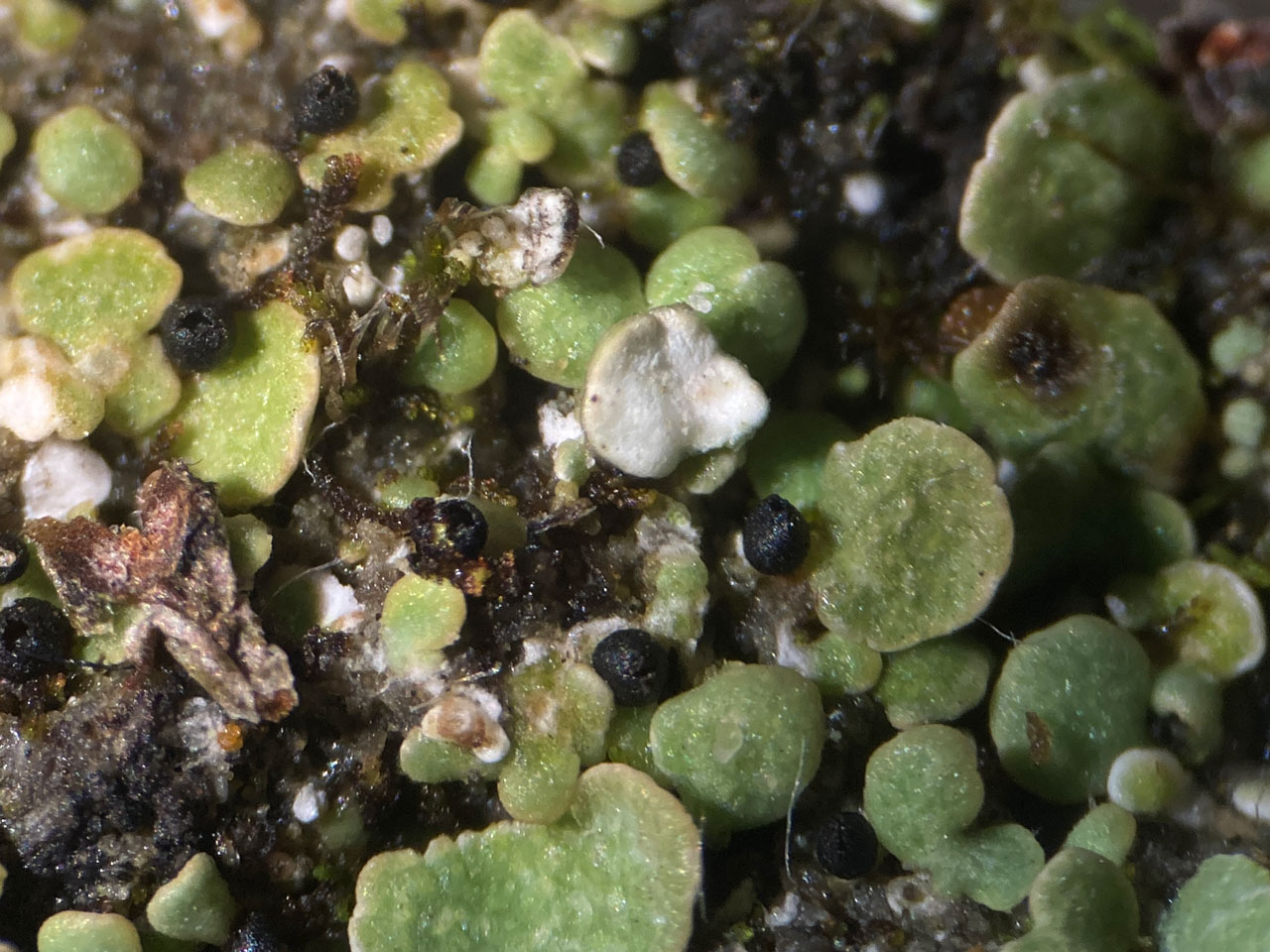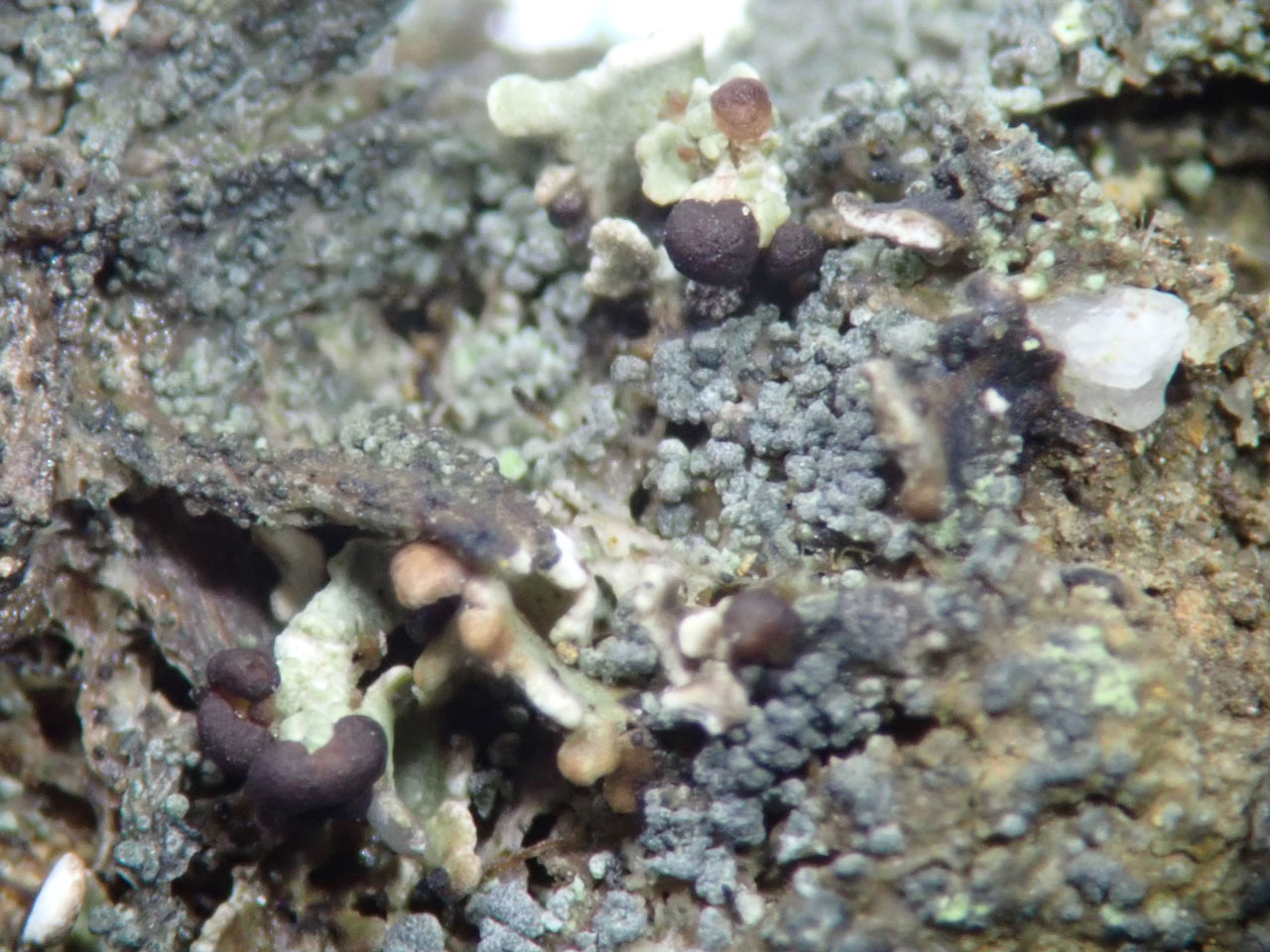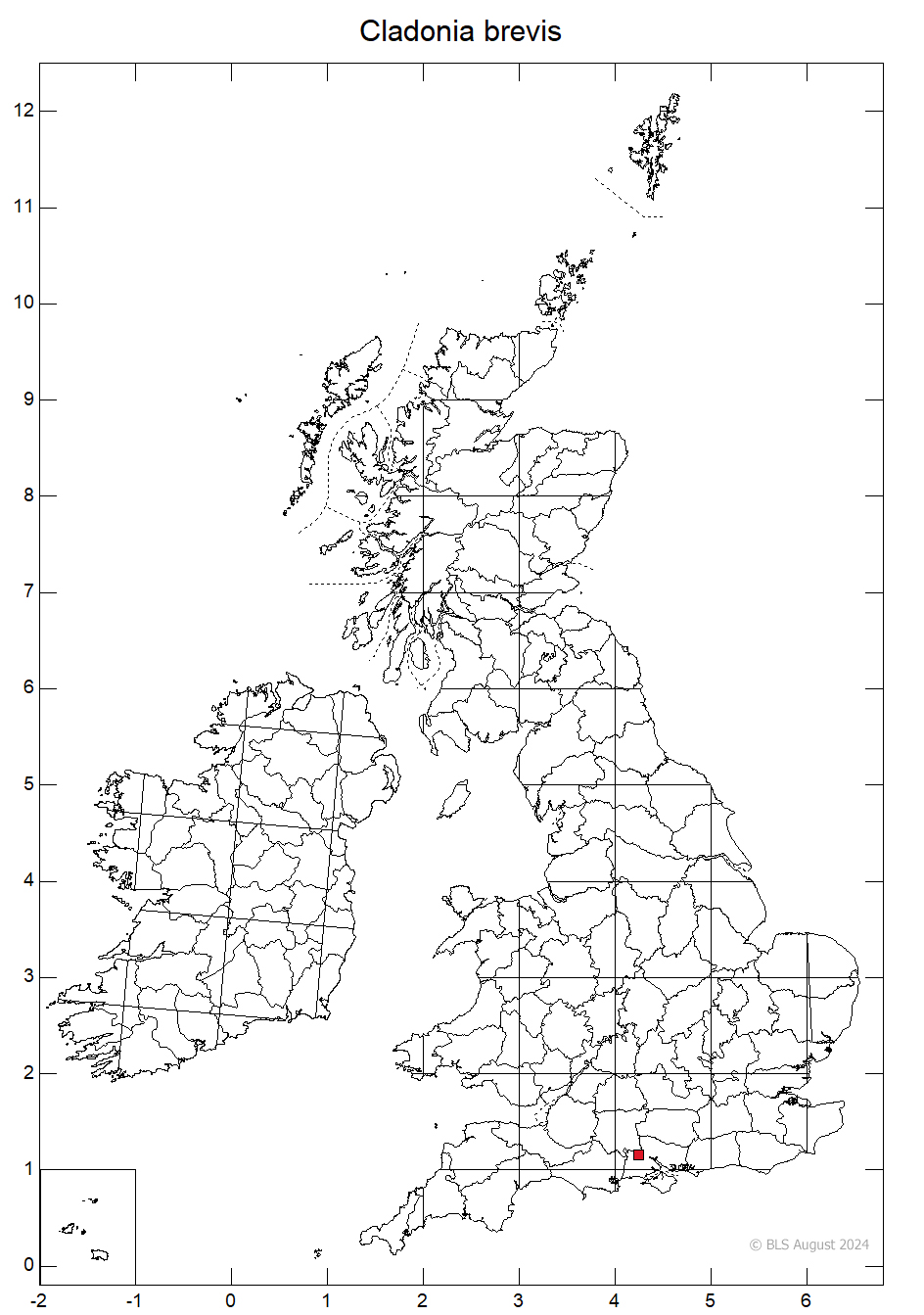Cladonia brevis
An apparently rare lichen typically forming sterile squamule mats of small mid-brown shallowly lobed squamules with white smooth white undersides with a smooth arachnoid surface. When dry there can be a distinctive white edge to the squamules where the underside is just visible. Distinctive features are the Pd+ yellow reaction of the medulla and the large black pycnidia on the squamules that are constricted at the base. Seems to be very rare in open low productivity habitats on old mine waste and in grazed heathland.
Primary thallus persistent. Squamules small, 1-3 mm long, shallowly lobed, glaucous green to a rich brown (dry), olive-brown (wet) and ± cracked on the upper surface, white below with a smooth arachnoid surface, not sorediate. Podetia, appear rare in Britain, to 8 mm in length though sometimes undeveloped, clavate, unbranched or branched near the apex, flattened, the surface corticate and areolate. Apothecia brown, at the tips of podetia. Pycnidia large, black, constricted at the base, on the primary thallus. Thallus Pd+ yellow, K–, KC–, C–, UV– (psoromic and 2’-O-demethylpsoromic acids).
Cladonia brevis has a scattered distribution in Europe and is more common in North America, though populations lacking podetia are probably overlooked. It is related to the predominantly northern species C. macrophylla which has a similar chemistry but much larger squamulose podetia. In the absence of podetia it can be confused with C. pulvinata and C. symphycarpa which react Pd+ yellow. However, C. symphycarpa grows on basic soils, is much larger and is often K+ yellow becoming red or K+ yellow. The squamules of C. pulvinata are slightly larger, more lobed, with a strongly tomentose underside and frequently have pruinose tips. For Cladonia brevis, the large black pycnidia constricted at the base are highly distinctive (but can be rare or absent) and are absent on other Pd+ yellow Cladonia species with small squamules. When glaucous green, the small rounded squamules with smooth white undersides are very similar to those of Cladonia peziziformis, but this is Pd+ orange-red.
Over small stones on soil in old lead mines in mid Wales and the Pennines, on acid humus over gravel on a little used tack in short grazed heathland in the New Forest and in open patches in well grazed heath in the New Forest. Associated with Cladonia firma, Cladonia strepsilis and Pycnothelia papillaria at the New Forest track site. Almost certainly overlooked elsewhere and should be looked for in stable but very open short vegetation on acid soils.

In 2024 known from five sites, two in Carmarthenshire, Wales, one in the North Pennines and the others in the New Forest, Hampshire, very likely to occur elsewhere.
Not assessed, potentially a Red List species but currently data deficient. Likely to be dependant on very open but stable vegetation, so vulnerable to loss to vegetation over growth with reductions in grazing pressure and dependant on infrequent disturbance of low productivity habitats.
Pino-Bodas, R., Sanderson, N., Cannon, P., Aptroot, A., Coppins, B., Orange, A. & Simkin, J. (2021). Lecanorales: Cladoniaceae [revision 1], including the genera Cladonia, Pilophorus and Pycnothelia. Revisions of British and Irish Lichens 26: 1-45.
Text by Neil A Sanderson based on Pino-Bodas et al (2021)
